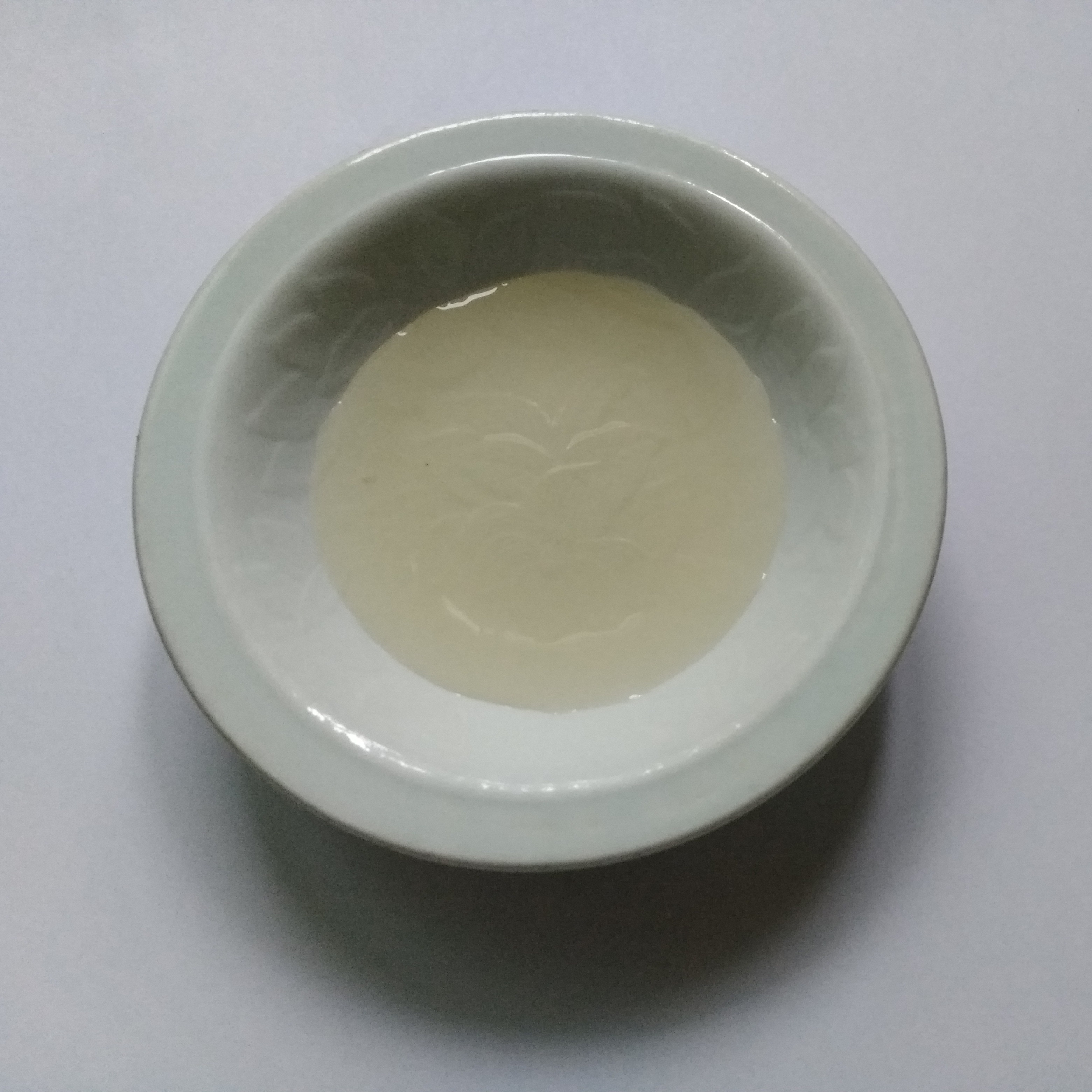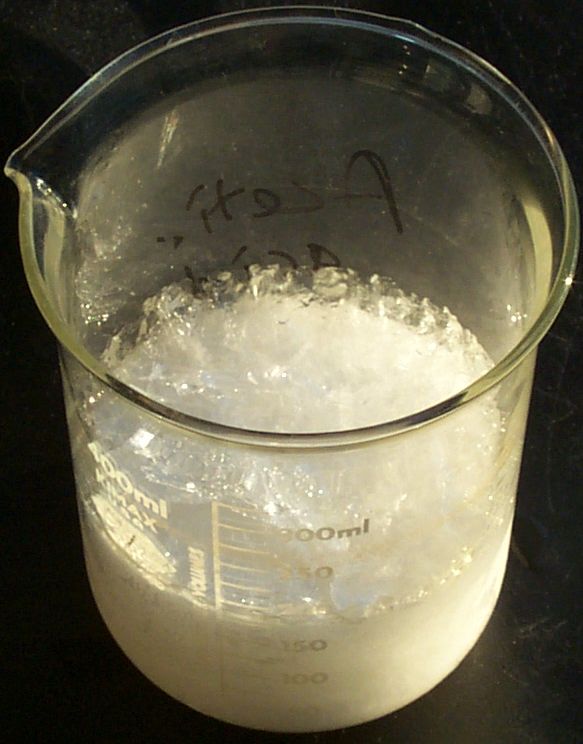|
Rice Vinegar
Rice vinegar is a vinegar made from rice wine in East Asia (China, Japan and Korea), as well as in Vietnam in Southeast Asia. It is used as a seasoning, dressing, and dipping in many dishes, including sushi, jiaozi, and banchans. Some of its variants are also a drink by themselves. Chinese Chinese rice vinegars are stronger than Japanese ones, and range in color from clear to various shades of red, brown and black and are therefore known as rice wine vinegars. Chinese vinegar are less acidic than their distilled Western counterparts which, for that reason, are not appropriate substitutes for rice vinegars. The majority of the Asian rice vinegars are also milder and sweeter than those typically used in the Western world, with black vinegars as a notable exception. Types White rice vinegar is a colorless to pale yellow liquid, more acidic than other Chinese vinegars, but still less acidic and milder in flavor than Western ones. Black vinegar is very popular in southern China. ... [...More Info...] [...Related Items...] OR: [Wikipedia] [Google] [Baidu] [Amazon] |
Chinkiang Vinegar
Zhenjiang or Chinkiang vinegar is a rice-based black vinegar widely used in Chinese cuisine. It takes its name from the city of Zhenjiang in Jiangsu province. History Chinese legend ascribes the invention of the vinegar to Heita, a son of Dukang, one of the culture heroes credited with inventing alcoholic beverages in China's prehistory Prehistory, also called pre-literary history, is the period of human history between the first known use of stone tools by hominins million years ago and the beginning of recorded history with the invention of writing systems. The use .... Supposedly, Heita forgot a vat of wine for 21 days and, remembering it at dusk, found it pleasantly sour. Historical records for the present vinegar can be traced back 1400 years. The primary producer of Zhenjiang vinegar at present—the Jiangsu Hengshun Vinegar Industry Company—was established in 1840. Production Production of Zhenjiang vinegar begins when a vinegar ''pei'' mixture (wheat ... [...More Info...] [...Related Items...] OR: [Wikipedia] [Google] [Baidu] [Amazon] |
Acetic Acid
Acetic acid , systematically named ethanoic acid , is an acidic, colourless liquid and organic compound with the chemical formula (also written as , , or ). Vinegar is at least 4% acetic acid by volume, making acetic acid the main component of vinegar apart from water. Historically, vinegar was produced from the third century BC and was likely the first acid to be produced in large quantities. Acetic acid is the second simplest carboxylic acid (after formic acid). It is an important Reagent, chemical reagent and industrial chemical across various fields, used primarily in the production of cellulose acetate for photographic film, polyvinyl acetate for wood Adhesive, glue, and synthetic fibres and fabrics. In households, diluted acetic acid is often used in descaling agents. In the food industry, acetic acid is controlled by the E number, food additive code E260 as an acidity regulator and as a condiment. In biochemistry, the acetyl group, derived from acetic acid, is funda ... [...More Info...] [...Related Items...] OR: [Wikipedia] [Google] [Baidu] [Amazon] |
Monascus Purpureus
''Monascus purpureus'' (syn. ''M. albidus'', ''M. anka'', ''M. araneosus'', ''M. major'', ''M. rubiginosus'', and ''M. vini''; zh, s= 红 曲 霉, t=紅麴黴, p=hóng qū méi, lit. "red yeast") is a species of mold that is purplish-red in color. It is also known by the names ang-khak rice mold, corn silage mold, maize silage mold, and rice kernel discoloration. Taxonomy and morphology The sexual state of ''M. purpureus'' is a cleistothecium with a two-layered wall, enclosing round, evanescent eight-spored asci, lifted above the substrate on a multi-hyphal stalk. Ascospores can be heat-resistant. The asexual state forms chains of hyaline, or brownish, chlamydospore-like cells. Physiology and metabolites During growth, ''Monascus'' spp. breaks down starch substrate into several metabolites, including pigments produced as secondary metabolites. The structure of pigments depends on the type of substrate and other specific factors during culture, such as acidity or basicity ( ... [...More Info...] [...Related Items...] OR: [Wikipedia] [Google] [Baidu] [Amazon] |
Red Yeast Rice
Red yeast rice or red rice ''koji'' is a bright reddish purple fermented rice, which acquires its color from being cultivated with the mold '' Monascus purpureus''. Red yeast rice is what is referred to as a '' kōji'' in Japanese, meaning "grain or bean overgrown with a mold culture", a food preparation tradition going back to ca. 300 BC.Shurtleff W, Aoyagi A (2012). ''History of Koji – Grains and/or Beans Overgrown with a Mold Culture (300 BCE to 2012)''. Lafayette, California: Soyinfo Center. In addition to its culinary use, red yeast rice is also used in Chinese herbology and Traditional Chinese medicine, possibly during the Tang dynasty around AD 800. Red yeast rice is described in the Chinese pharmacopoeia '' Ben Cao Gang Mu'' by Li Shizhen. A modern-era use as a dietary supplement developed in the late 1970s after researchers were isolating lovastatin from ''Aspergillus'' and monacolins from '' Monascus'', the latter being the same fungus used to make red yeast rice. ... [...More Info...] [...Related Items...] OR: [Wikipedia] [Google] [Baidu] [Amazon] |
Shanxi Province
Shanxi; formerly romanised as Shansi is a province in North China. Its capital and largest city of the province is Taiyuan, while its next most populated prefecture-level cities are Changzhi and Datong. Its one-character abbreviation is (), after the state of Jin that existed there during the Spring and Autumn period (). The name ''Shanxi'' means 'west of the mountains', a reference to its location west of the Taihang Mountains. Shanxi borders Hebei to the east, Henan to the south, Shaanxi to the west and Inner Mongolia to the north. Shanxi's terrain is characterised by a plateau bounded partly by mountain ranges. Shanxi's culture is largely dominated by the ethnic Han majority, who make up over 99% of its population. Jin Chinese is considered by some linguists to be a distinct language from Mandarin and its geographical range covers most of Shanxi. Both Jin and Mandarin are spoken in Shanxi. Shanxi is a leading producer of coal in China, possessing roughly a third of ... [...More Info...] [...Related Items...] OR: [Wikipedia] [Google] [Baidu] [Amazon] |
Hong Kong
Hong Kong)., Legally Hong Kong, China in international treaties and organizations. is a special administrative region of China. With 7.5 million residents in a territory, Hong Kong is the fourth most densely populated region in the world. Hong Kong was established as a colony of the British Empire after the Qing dynasty ceded Hong Kong Island in 1841–1842 as a consequence of losing the First Opium War. The colony expanded to the Kowloon Peninsula in 1860 and was further extended when the United Kingdom obtained a 99-year lease of the New Territories in 1898. Hong Kong was occupied by Japan from 1941 to 1945 during World War II. The territory was handed over from the United Kingdom to China in 1997. Hong Kong maintains separate governing and economic systems from that of mainland China under the principle of one country, two systems. Originally a sparsely populated area of farming and fishing villages,. the territory is now one of the world's most signific ... [...More Info...] [...Related Items...] OR: [Wikipedia] [Google] [Baidu] [Amazon] |
Sorghum
''Sorghum bicolor'', commonly called sorghum () and also known as great millet, broomcorn, guinea corn, durra, imphee, jowar, or milo, is a species in the Poaceae, grass genus ''Sorghum (genus), Sorghum'' cultivated for its grain. The grain is used as food by humans, while the plant is used for animal feed and ethanol production. Sorghum originated in Africa, and is widely cultivated in tropical and subtropical regions. Sorghum is the world's fifth-most important cereal crop after rice, wheat, maize, and barley. Sorghum is typically an annual, but some cultivars are perennial. It grows in clumps that may reach over high. The grain is small, in diameter. Sweet sorghums are cultivars grown for forage, syrup production, and ethanol. They are taller than those grown for grain. Description Sorghum is a large stout grass that grows up to tall. It has large bushy flowerheads or panicles that provide an edible starchy grain with up to 3,000 seeds in each flowerhead. It grows ... [...More Info...] [...Related Items...] OR: [Wikipedia] [Google] [Baidu] [Amazon] |
Millet
Millets () are a highly varied group of small-seeded grasses, widely grown around the world as cereal crops or grains for fodder and human food. Most millets belong to the tribe Paniceae. Millets are important crops in the Semi-arid climate, semiarid tropics of Asia and Africa, especially in India, Mali, Nigeria, and Niger, with 97% of production in Developing country, developing countries. The crop is favoured for its Agricultural productivity, productivity and short growing season under hot dry conditions. The millets are sometimes understood to include the widely cultivated sorghum; apart from that, pearl millet is the most commonly cultivated of the millets. Finger millet, proso millet, and foxtail millet are other important crop species. Millets may have been consumed by humans for about 7,000 years and potentially had "a pivotal role in the rise of multi-crop agriculture and settled farming societies". Etymology The word ''millet'' is derived via Old French ''millet, ... [...More Info...] [...Related Items...] OR: [Wikipedia] [Google] [Baidu] [Amazon] |
Glutinous Rice
Domestication syndrome refers to two sets of phenotypic traits that are common to either domesticated plants or domesticated animals. Domesticated animals tend to be smaller and less aggressive than their wild counterparts; they may also have floppy ears, variations to coat color, a smaller brain, and a shorter muzzle. Other traits may include changes in the endocrine system and an extended breeding cycle. These animal traits have been claimed to emerge across the different species in response to selection for tameness, which was purportedly demonstrated in a famous Russian fox breeding experiment, though this claim has been disputed. Other research suggested that pleiotropic change in neural crest cell regulating genes was the common cause of shared traits seen in many domesticated animal species. However, several recent publications have either questioned this neural crest cell explanation or cast doubt on the existence of domestication syndrome itself. One recent publica ... [...More Info...] [...Related Items...] OR: [Wikipedia] [Google] [Baidu] [Amazon] |
Sichuan
Sichuan is a province in Southwestern China, occupying the Sichuan Basin and Tibetan Plateau—between the Jinsha River to the west, the Daba Mountains to the north, and the Yunnan–Guizhou Plateau to the south. Its capital city is Chengdu, and its population stands at 83 million. Sichuan neighbors Qinghai and Gansu to the north, Shaanxi and Chongqing to the east, Guizhou and Yunnan to the south, and Tibet to the west. During antiquity, Sichuan was home to the kingdoms of Ba and Shu until their incorporation by the Qin. During the Three Kingdoms era (220–280), Liu Bei's state of Shu was based in Sichuan. The area was devastated in the 17th century by Zhang Xianzhong's rebellion and the area's subsequent Manchu conquest, but recovered to become one of China's most productive areas by the 19th century. During World War II, Chongqing served as the temporary capital of the Republic of China, and was heavily bombed. It was one of the last mainland areas captured ... [...More Info...] [...Related Items...] OR: [Wikipedia] [Google] [Baidu] [Amazon] |






